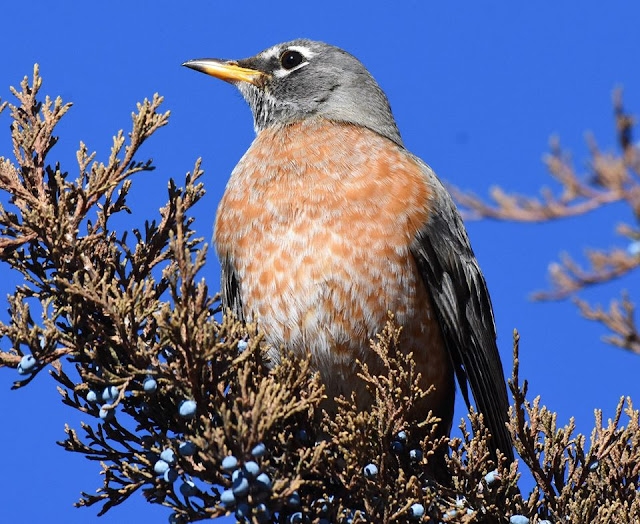Tradition dictates that we walk the Proctor Trail up to the Whitehouse Picnic area of Madera Canyon each year.
It was just the two of us strolling along the empty trail early in the morning. We found ourselves walking with the deer. And eventually....
.....among a lot of Gould's Wild Turkeys!!! Chicken birds have always captured my interest, even if I've seen them over and over again. I am still fascinated by the Wild Turkey.
I took videos of them scratching the dirt. I can't believe how fortunate we were to be in the middle of the rafter(flock) observing these birds just inches from our bodies. They were not skittish at all.
There were turkeys along the creek, in trees, resting in the grass, on the trail and around the feeders further up.
 |
| Gould's Wild Turkey |
 |
| Townsend's Warbler |
We sat and waited for our male friend, the Elegant Trogon to show up. It was a lifer for Celeste. It's amazing how many people dip on this bird. And in my humble opinion, trogons are much easier to spot in the winter than in the summer when they are on nests. In winter, you don't have to get up early to see them. But in the spring and summer, it's an early rise for the birder in the dark driving to the canyons to hear them bark out their territories first thing in the morning.
 |
| Elegant Trogon, male |
 |
| Mexican Jays |
















































